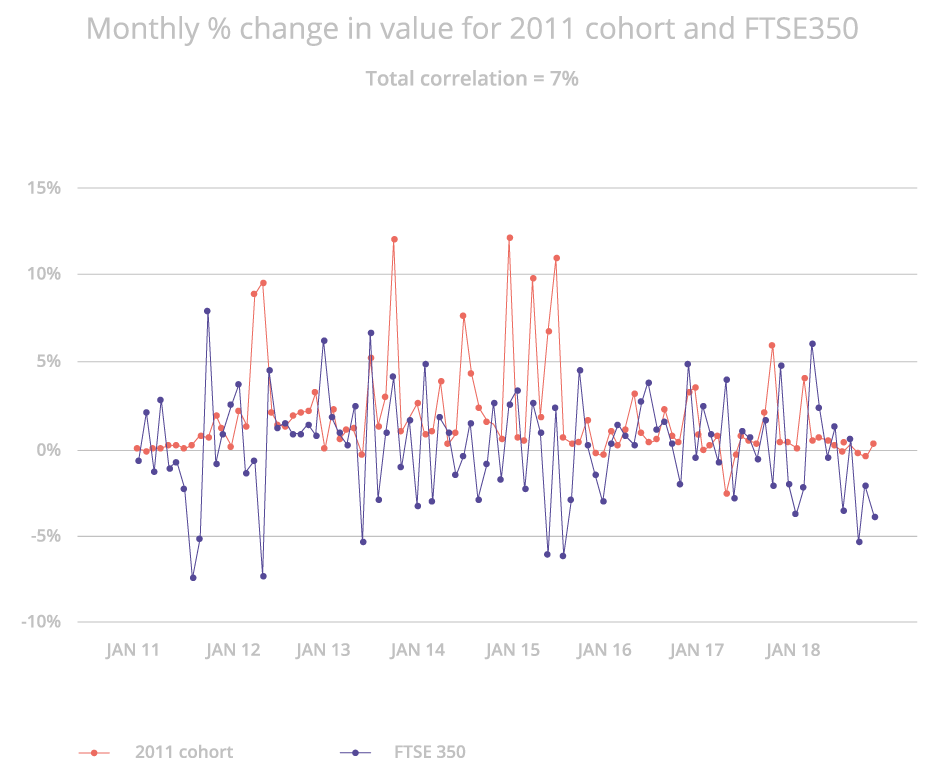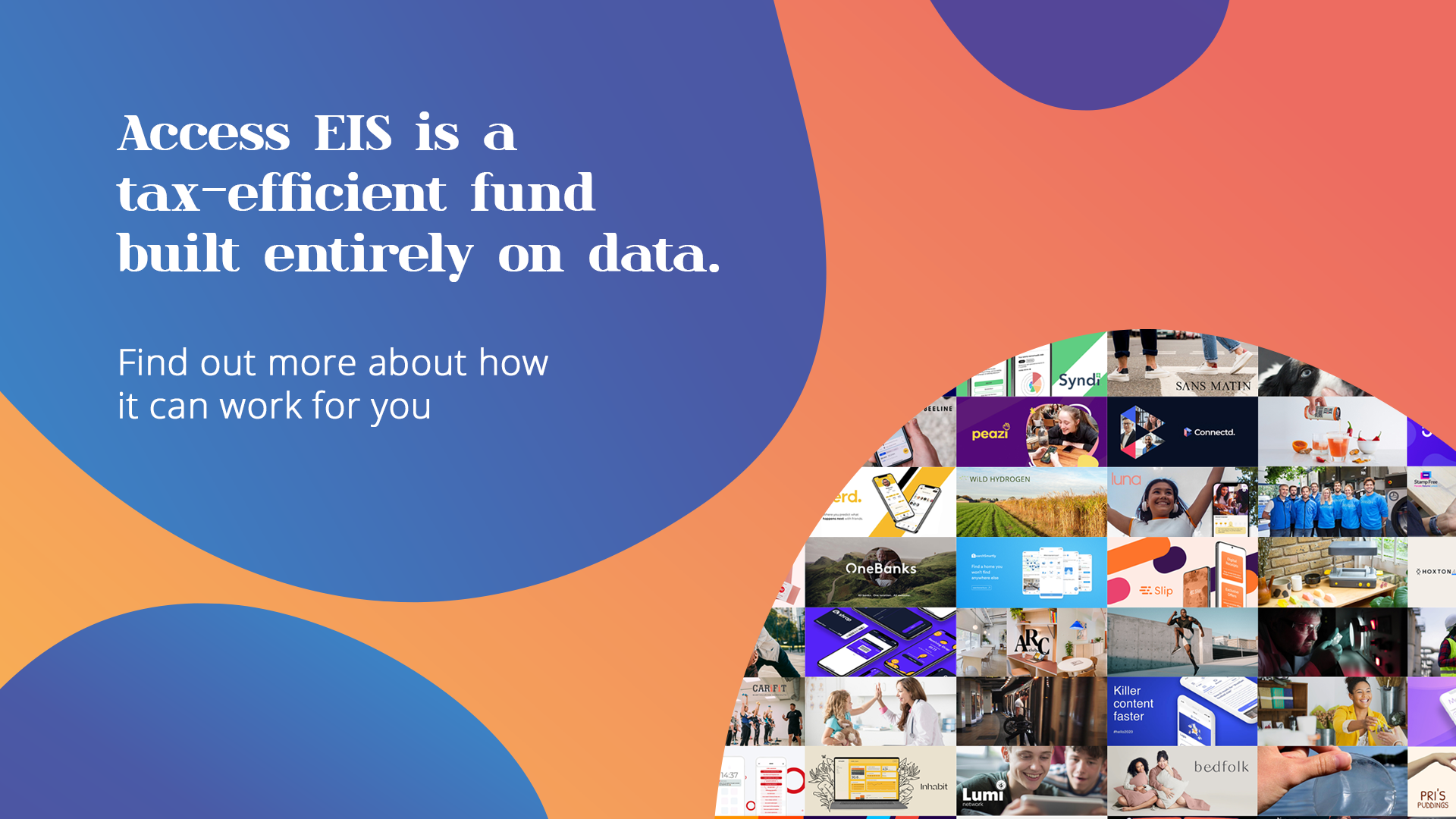What is an uncorrelated investment?
An uncorrelated investment is one that has a low or negative correlation to traditional asset classes including stocks and bonds. Uncorrelated assets move independently of traditional asset classes and, when included in a broader portfolio, can lower portfolio volatility while improving risk-adjusted returns.
Why do people invest in uncorrelated assets?
Investing in uncorrelated assets is a method of diversifying a portfolio outside of holdings that fluctuate with the market. Where the market can be affected by anything from natural disaster to an incendiary social media post, uncorrelated assets enjoy something of a buffer from market volatility.

What are the most common uncorrelated assets?
1. Venture capital
Venture capital involves investing in early-stage companies with high growth potential. These companies are typically startups though some VC firms invest at later stages of a companies development. In the UK EIS funds, SEIS funds, and VCTs are common venture capital funds that retail investors can invest in.
2. Artwork and collectibles
Investing in artwork and collectibles, such as paintings, sculptures, rare coins, or vintage cars often requires a unique expertise to value and authenticate an asset. Prices can be influenced by market trends, art world events, and the reputation of artists or collectors.
3. Real estate
Real estate investments involve purchasing and owning physical properties, including residential or commercial buildings, land, or even real estate investment trusts (REITs). While this asset can provide rental income and potential for capital appreciation it can be illiquid and subject to market fluctuations.
4. Music royalties
Investing in music royalties means owning a share of the revenue generated from music compositions and recordings. This revenue can come from streaming, radio play, or licensing, to name a few. This asset is prized for providing ongoing income, though predictability of this income and value of the asset can be difficult.
5. Precious metals
One of the few uncorrelated investments where there are many markets for trading them, precious metals are often used to hedge against inflation and currency devaluation. Gold, silver, platinum and palladium do have a particular shine but their prices are influenced by global economic factors and supply and demand dynamics.
The advantages of adding uncorrelated investments to your portfolio
Diversification
By spreading investment across a range of uncorrelated assets, an investor can reduce their overall portfolio risk and lower volatility. When one asset class performs poorly, another may perform well, helping to offset losses.
Potential for high returns
Venture capital and private equity offer a higher potential for returns compared to traditional investments while real estate and precious metals can offer capital appreciation over time. If the value of the underlying asset increases, the investor can realize a substantial profit.
Tax efficiency
Some of these assets, venture capital through the EIS, SEIS, and VCT schemes, offer investors significant tax reliefs for investing. These tax reliefs can range from 30% up to 50% of an investment while also providing downside protection against losses.

The disadvantages of investing in non-correlated assets
There are three key downsides investors should pay attention to before committing to invest in an uncorrelated investment.
Illiquidity
There are often few, if any, established markets for the buying and selling of many uncorrelated asset classes. For collectibles and property there are services and auctions for the purchase/sale of them but the ability to make a quick sale is limited for both meaning once an investment is made it will need to be held for a period of time.
Investments in startups can take 7-10 years, and in some cases more, for the companies to develop sufficiently to become an acquisition target or list on a stock exchange.
Due diligence
Investors should conduct proper due diligence on any investment they make though for some assets it is easier to do than others. With non-correlated assets the amount of information available to any investor is often limited in comparison with the amount of information available on publicly traded stocks and bonds. While there may be some trade related publications that discuss the movements of a particular uncorrelated asset class the volume and transparency of this information is limited making it hard to conduct the same level of due diligence as one might like.
High risk
Many uncorrelated ventures carry higher risk compared to stocks and bonds. For example, most startup investments fail to return capital to investors. Sixty to seventy percent of startups fail while many more do not achieve enough success to either list on the market or be acquired by another business.
Commodities and real estate investments can also be risky due to market fluctuations and, in the case of real estate, the need for property management.
Given the above, investors less familiar with these asset classes may wish to consult with a financial advisor in addition to conducting thorough research of their own before making any investment decisions.
The impact of including the Access EIS fund in your portfolio
Access is a venture capital fund that offers investors EIS tax relief whilst spreading the investment over a portfolio of highly selective startups.
Our research (link) found that the UK venture market has a low correlation, 7% to be exact, with publicly traded markets. As read above, including uncorrelated investments in a broader portfolio can increase diversification and reduce volatility of the portfolio as a whole.
Further, research by Hardman & Co (link) found that including an optimal proportion of venture capital can have a positive impact on portfolio returns while maintaining, or reducing, the overall portfolio risk.
Register for our upcoming webinar
If you're interested in uncorrelated investments and would like to find out more about EIS, our next webinar will look at how we created an index of the UK startup market, and the insights our analysis can offer to investors. Click the link below to register.
Please note: our office hours are weekdays, 9.30am - 5.30pm.